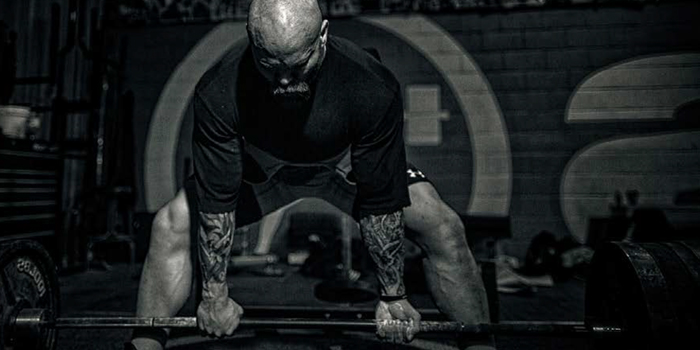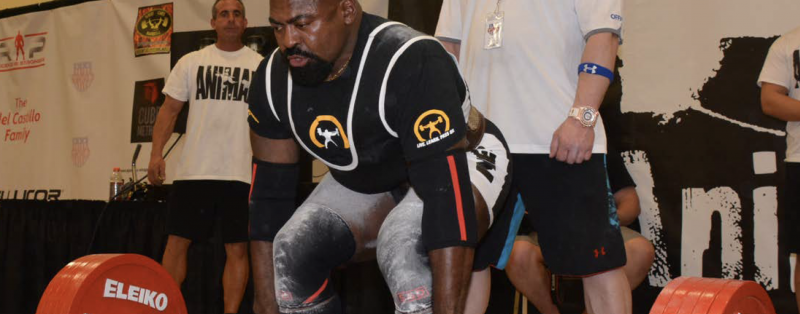
Have you ever watched a basketball game, and the commentator mentions an athlete being in the “zone?” It generally means that players are performing at a high level, and their accuracy is unmatched. If possible, this player could close their eyes and shoot from the “nosebleed” section, and the ball would still go through the basket. The “zone” is a state in which all distractions are blocked, and your sole focus is on the task in front of you. Tim Grover, a renowned basketball trainer, has worked with a few guys you might have heard of: Michael Jordan, the late Kobe Bryant, and Dwayne Wade. In his book, Relentless: From Good to Great to Unstoppable, Grover explains the “zone” this way:
“Anyone who has experienced the awesome power of the Zone will tell you it’s deeply calm. It’s not relaxing or peaceful—this isn’t yoga—but intensely focused. And once you’re there, you have no fear, no worry, no emotion. You do what you came to do, and nothing can touch you.”
Grover also had this to say about Michael Jordan and his intense focus:
“If one thing separated Michael from every other player, it was his stunning ability to block out everything and everyone else. Nothing got to him; he was ice. No matter what else was going on—the crowds, the media, the death of his father—when he stepped onto that basketball court, he was able to shut out everything except his mission to attack and conquer. I’ve never seen another player form such a perfect boundary around himself, where nothing goes in except what he brings with him.”
So how do you get into that same “zone” but as a lifter? This is where imagery and visualization can come into play. Numerous studies have proven the worth of using these techniques to enhance performance and muscle memory. Imagery is a useful tool for improving performance through the utilization of mental preparation. This type of training could be dismissed, though, because of an inferred idea that mental practice has an inferior impact on physical practice. Research disagrees and has even found a comparable response between mental reps and actual movement regarding physiological variables. Accordingly, motor imagery is the mental simulation of a certain movement without actual execution of the indicated task (Guillot et al., 2007). The psycho-neuromuscular theory proposes that the electromyography (EMG) of a muscle during an actual movement is the same during motor imagery (Guillot et al., 2007). Along with innervations of electrical activity, the Golgi tendon is also noted to be stimulated as well, causing a magnitude of neuromuscular activity to take place. To put this theory to the test, Guillot et al. (2007) looked into the effects of motor imagery on muscular contractions during the muscular response. An EMG recorded values of lifting weighted dumbbells during actual and mentally simulated movements. Values were comparable, indicating that the amount of electrical activity in the working muscle was similar during actual and mentally simulated movements. As a result, mental imagery can be a beneficial method for improving performance without the potential risk of over-training.
RELATED: The Best Mindset for Maximal Effort
Besides considering the actual movement, research also indicates that other factors be acknowledged, such as the environment and movement in real-time (Weinberg & Gould, 2010). This level of mental preparation would allow the lifter to practically replicate their effort and have a tighter grasp on their emotional state, eliminating the potential of any distraction.
Another key factor towards successful imagery would be “vividness” (Weinberg & Gould, 2010). Mentally simulated movements should consider the environment, such as gripping the bar and visualizing the movement in real-time. The more vivid the imagery, the more it allows the lifter to believe they have attempted the movement before. The autonomic nervous system, electromyography of muscular contractions, and neuromuscular activity of the body are all affected by imagery. Building this vivid image can affect all of these variables to make this mentally rehearsed movement seem like it happened before.

With being a lifter, though, there is the belief that you must lift with passion and anger to conquer the weights. Pending the type of movement and the condition provided, this idea of recklessly regulating the sense of arousal towards getting into the “zone” can impede performance. High levels of arousal can be distracting, causing a lifter to neglect concentration and diminish performance. This may be damaging for lifts like the squat or bench, which require more mastery to be successful. However, elevating your level of arousal for the deadlift could be a helpful tool, which requires a savage and relentless mentality. A high amount of force needs to be applied to the bar in a short amount of time, especially at the start, so a lot of aggression and excitation needs to be generated. Consequently, blare the AC/DC, grab the nose torque and a good back slap partner, and get that adrenaline flowing for a big deadlift!
Accordingly, we have discussed the idea of the “zone” and how scientific research indicates the correlation between imagery and performance. One of the last pieces missing is “how do we incorporate imagery towards elevating our performance within the zone?"
A term we brought up earlier in this article is “visualization.” This is a process where you imagine yourself performing movements before they happen. A big key to doing this is to use as much detail as possible. It requires you to separate from your daily routine into a non-disruptive scenario. This might mean closing your eyes and listening to music or walking into your dorm room with the lights off and laying down on your bed. Whichever scenario allows you to keep your mind perfectly still and quiet without any disruptions is best. Once you have reached this state, all you need to do is engage in vivid visualization of yourself lifting, most importantly with success!
To bring some application to this scenario, let’s say you are a powerlifter who plans to compete in four weeks at a local competition for a personal record of 650 pounds on the deadlift. Besides lifting and working towards a peak, every day you spend time in your bedroom with the lights off and your favorite lifting music playing. For 10-20 minutes, close your eyes and envision yourself in the environment you will be lifting in. Don’t just visualize lifting the barbell, but really imagine it is 650 pounds and that there is a crowd screaming at you to achieve your best!
MORE: Calming the Storm Between Attempts
To add further detail, you could possibly tour where the meet will be held or look at pictures online of the venue. Create this environment in your head. Then, as you develop your visualization skills, rehearse the scenario as close to reality as possible. See yourself performing your opener with ease, feeling the grip of the bar in your hands and how the bar slides up your hips with tremendous speed. Walk through your second attempt, and then move onto your third and final attempt. This will be the biggest lift of your life, so you really need to hunker down with your mental preparation. Imagine the crowd cheering, your friend handing you an ammonia capsule, and then your best bud giving you a back slap heard around the world. Visualize walking up the bar, reaching down and grabbing it with maximal body tension, and then pulling it up your legs and into your lap for success. It’s as if you are the writer of the story. The more detail you add, the more realistic it becomes, and your body will respond to this type of engagement as “already happening.” The mindset then becomes, if you have “done something before,” why can’t it be done again? Mental imagery and visualization grant you this type of confidence!
I’ll finish with a story of my last powerlifting meet and how finding the “zone” through mental preparation can make the difference in success or failure. The powerlifting meet was in November 2016, and my wife was about five months pregnant at the time with our daughter. I drove to the meet by myself to check in early and get prepared before warming up for my first squat attempt. As I was warming up, I received a call from my wife. She was going to the emergency room. She had become really dizzy and lightheaded and had fallen at home. I was frozen with disbelief. I told her I would skip the meet and go to the hospital with her. She encouraged me to stay and that she would keep me updated on her situation. Immediately, I started praying and wondering how I was going to get through the meet. I was physically prepared, but was my mental state ready to handle this unexpected state of affairs? I had a decision to make: would I crumble under the pressure of the uncontrollable, or would I trust my physical and mental preparation and block out (for the time being) the situation with my wife and unborn child? Thankfully, I had spent time leading up to the meet on mental visualization. I had been a spectator at the particular meet in the past, so I used that past experience to see myself successfully performing the lifts in that environment. I could temporarily shut out the circumstances happening with my wife and enter the “zone” to complete the task at hand. This strategy paid dividends as I finished a 9 for 9 that day by deadlifting 650 pounds and winning first place in the 242 men’s open raw division.
Overall, this story is just one example of what mental preparation and imagery can do even in the midst of chaotic circumstances. By practicing these techniques, you can have focus and concentration in the midst of extreme settings and bring out your very best when the chances say it's impossible.
References
- Grover, Tim S. Relentless: From Good to Great to Unstoppable (p. 48). Scribner. Kindle Edition.
- Guillot, A., Lebon, F., Rouffet, D., Champely, S., Doyon, J., & Collet, C. (2007). Muscular responses during motor imagery as a function of muscle contraction types. International Journal Of Psychophysiology: Official Journal Of The International Organization Of Psychophysiology, 66(1), 18-27.
- Weinberg, R, & Gould, D. (2010). Foundations of sport and exercise psychology (5th ed.). Champaign: Il: Human Kinetics.
- Whelan, J. P., Epkins, C. C., & Meyers, A. W. (1990). Arousal interventions for athletic performance: Influence of mental preparation and competitive experience. Anxiety.
Joseph Lucero is a private strength and conditioning specialist at "Harvesting Strength." He has had experience with individuals in the youth, high school, and collegiate setting. His passion is for all things strength, plus promoting strength and power for speed acquisition. He earned his master's degree from the University of Texas at San Antonio and has his CSCS from the NSCA since 2014. #bangtheiron
Jay Corwell is a certified personal trainer and powerlifter in Cincinnati, Ohio. He trains individuals from all walks of life for one reason: to get them strong. He has his master's degree in Health Education with a concentration in Exercise Management from the University of Cincinnati. He operates his own website at fitnessslackers.com.











3 Comments